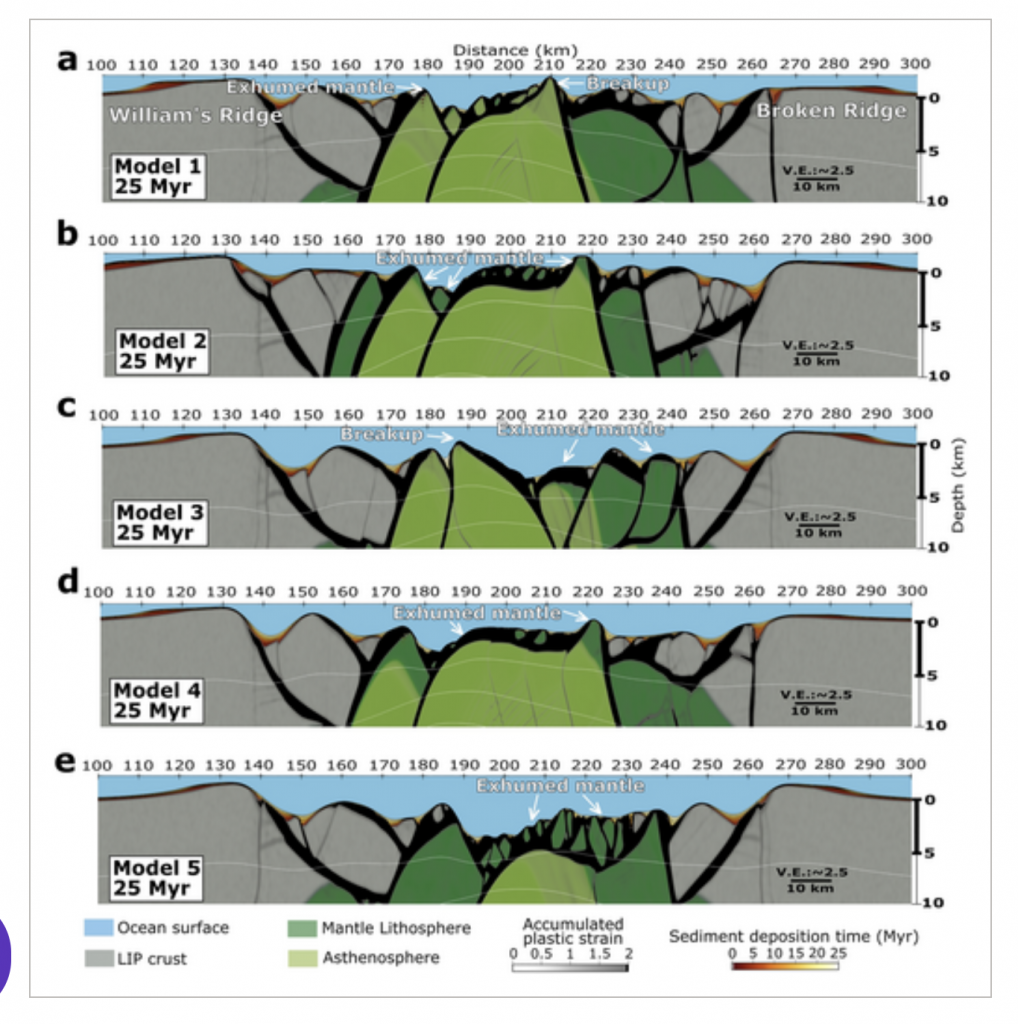Numerical models, coupled with observational data, have proven crucial for addressing fundamental questions regarding extensional processes from continental rift to mid-ocean ridge (MOR). However, extensional processes at Large Igneous Provinces (LIP), a distinct type of lithosphere, have not been examined, leaving a thorough comprehension of rift mechanics unresolved. Here, we model the thermo-mechanical evolution for LIPs, with reference to William’s Ridge (Kerguelen Plateau) and Broken Ridge, conjugate segments of the Kerguelen LIP. In this study, we employ distinctive input parameters to define the LIP lithosphere, incorporating the mafic crustal composition typically found at MORs, but characterized by a crustal thickness resembling continental rifts. We use multichannel seismic reflection profiles to help interpret our numerical models and we refine previous attempts of William’s Ridge-Broken Ridge rift system classification, under the deformation migration concept. Our results show that rifting of an oceanic LIP combines elements of extensional processes in both continental and oceanic rifts and leads to the formation of a LIP Core Complex. Core complexes exhibit domal structures forming at slow and ultra-slow extension and spreading rates in continents and at MORs, respectively. The LIP Core Complex includes features such as exhumed deep crustal material, rider blocks, rotational movement of crust and uppermost mantle along a detachment fault, steep normal faulting, and a transitional area of apparent unbending.

![]()

